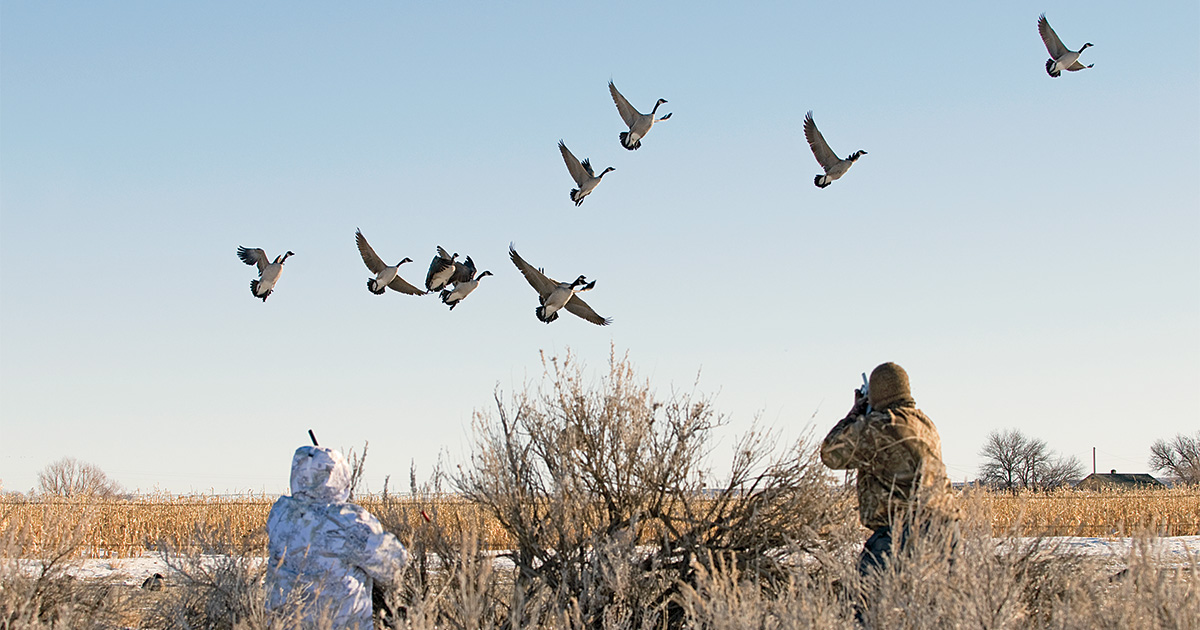Surefire Shooting Tips for Canada Geese
Quick tips to improve your gunning and ensure every shot counts on your next goose hunt
Quick tips to improve your gunning and ensure every shot counts on your next goose hunt

A giant Canada goose is the size of a small turkey, and it has a much wider wingspan. When their wings are cupped and they’re sailing into the decoys with their feet down, honkers can seem almost impossible to miss. Yet even the most experienced goose hunters have sad stories to tell of shouldering their guns, firing three shots, and watching a decoying goose fly away unscathed.
Canada geese can fly at speeds of 50 miles per hour or more. Even at slower speeds, these birds still move fast enough to cause a miss if you don’t lead them enough or if you stop your swing before pulling the trigger. The birds’ large physical size also makes estimating their range challenging, since they can appear much closer than they actually are. A goose is a big, tough bird, so it’s important to keep your shots within 40 yards (although 30 is better). If you keep the farthest decoy in your spread inside that 40-yard mark and use it for a reference, you can avoid shooting at geese that are too far away.
Once geese are within range, most seasoned goose hunters try to “aim for the cheeks.” That means, as you shoulder your shotgun, focus on one goose’s white cheek patch. Swing just past the bird’s bill, and then pull the trigger. If you are on target, most of the pellets will strike the bird’s head and neck. The goose will fold up instantly—and the breast meat will be mostly free of shot.
Ducks Unlimited uses cookies to enhance your browsing experience, optimize site functionality, analyze traffic, and deliver personalized advertising through third parties. By continuing to use this site, you agree to our use of cookies. View Privacy Policy